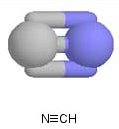Cyanide Fact Sheet
|
The M256A1 chemical agent detector kit used by the U.S. Army detects and preliminary identifies chemical agents on the field. (Source: U.S. Army) Cyanide at its deadliest, is a colorless gas with a bitter almond odor detectable by certain people. It has been developed as the volatile hydrogen cyanide and the more stable cyanogen chloride as chemical weapons. Either formulation is effective as a chemical blood agent that affects cells' ability to utilize oxygen absorbed from the bloodstream. Delivery: As a solid, cyanide salts can be absorbed through the skin and eyes and can be ingested. Similarly, cyanide liquids and gases can enter the body through contact, ingestion, and most effectively, inhalation. Water can also be contaminated with cyanide. Production: In the U.S. alone in 2003, the top thirteen manufacturers of hydrogen cyanide produced 2.019 billion pounds to fulfill its demand in other industries such as metallurgy and electroplating. Cyanide can be produced or extracted from many everyday items such as burning cigarettes, plastics, wool, and silk, and from portions of certain plants like the roots of cassava plants and the pits of cherries and apricots. Historic Use: In World War I, the French and British used ineffective 1- and 2-lb cyanide bombs that did not have enough gas to incapacitate. The Japanese also included cyanide in their inventory of chemical and biological weapons during World War II. The insecticide Zyklon B contained hydrogen cyanide and was used by the Germans in the Holocaust. Cyanide was used in the United States to execute prisoners in the gas chamber from 1924 to 1999. |
Treatment: The victim should be moved to fresh air and have contaminated clothing removed. Administering amyl nitrite, sodium nitrite, and sodium thiosulfate, antidotes to cyanide, provides cyanide alternate binding sites to cytochrome and produces a toxin less harmful than cyanide. Treatment with oxygen is also advised along with removal of traces of cyanide from the person using soap and water. |
|||||
(Sources: Scotland Yard, CDC, U.S. Army, eMedicine.com) *Lord, J.M., Roberts, L.M., Robertus, J.D. Ricin: Structure, Mode of Action, and Some Current Applications. FASEB J 1994;8:201-208 |
||||||




